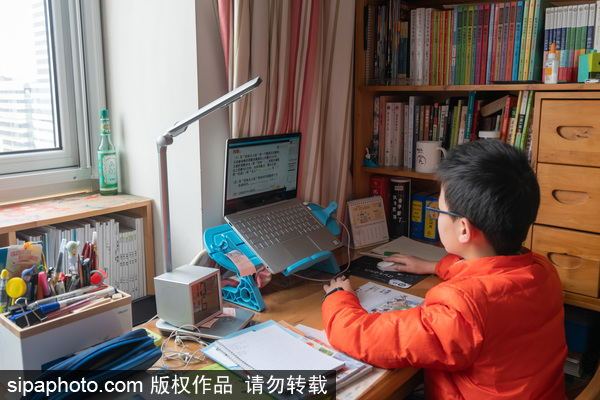
A boy wearing glasses interacts with his teacher during an online class in Shanghai on March 3, 2020. (Photo: sipaphoto)
The myopia rate among Chinese primary and secondary school students increased by 11.7 percentage points in the first half of this year as they spent more time studying online due to the impact of the COVID-19 pandemic, the Ministry of Education said on Thursday.
Wang Dengfeng, head of the ministry's Department of Physical, Health and Arts Education, said a survey of more than 14,500 students in nine provinces conducted by the ministry found the myopia rate among primary school students was up 15.2 percentage points, with that of middle school students up by 8.2 percentage points, and the rate for high school students 3.8 percentage points higher.
"The situation is not optimistic and the reason for high school students having the lowest growth rate is that their myopia rate was already very high," he said.
The survey also found that students who spent more time studying online had higher myopia rates, with 76.7 percent of students spending more than four hours on online courses a day having myopia, compared with 62.4 percent of those studying online for 2.5 to four hours a day, and 49.3 percent of those studying online for one to 2.5 hours a day, Wang said.
With the country planning the full resumption of in-class teaching for the fall semester, the ministry has asked schools to limit time spent on online courses to curb the myopia rate among students, he said.
Primary school students should spend less than two hours working on computer screens in classes and extracurricular courses a day, Wang said, with three hours the limit for middle school students and four hours for high school students. He also said students should exercise outdoors for at least an hour a day.
A report issued by the ministry last year said 68.8 percent of eighth graders had poor eyesight — mainly myopia — in 2018, up 3.5 percentage points from 2015. The rate among fourth graders was 38.5 percent, up 2 percentage points from 2015.


